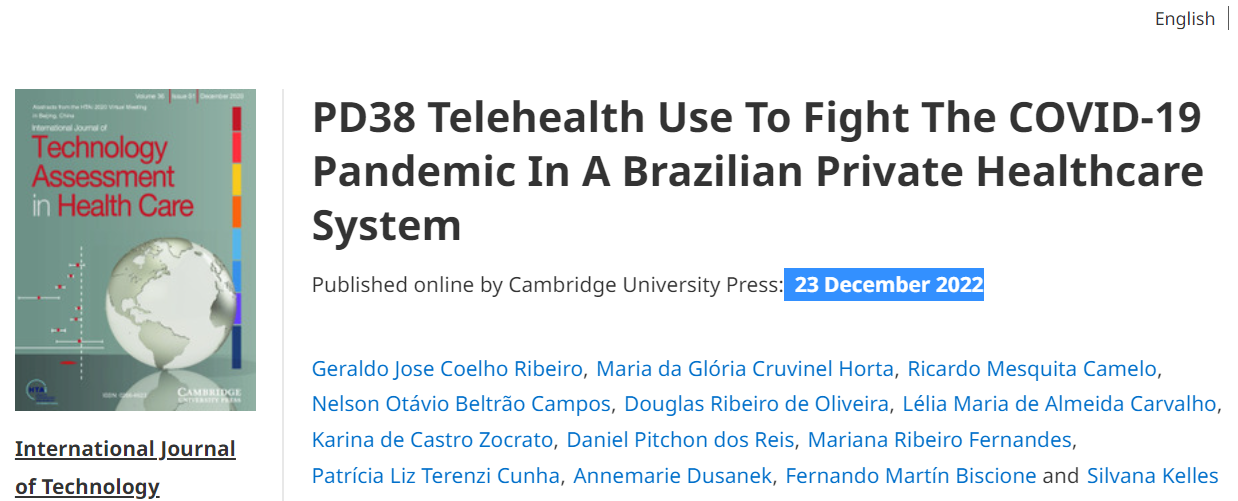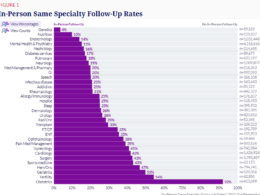health transformation institute (HTI)
Joaquim Cardoso MSc
Founder and Chief Researcher & Editor
December 23, 2022
Source:
Cambridge University Press
International Journal of Technology Assessment in Health Care
Cambridge Core
Geraldo Jose Coelho Ribeiro, Maria da Glória Cruvinel Horta, Ricardo Mesquita Camelo, Nelson Otávio Beltrão Campos, Douglas Ribeiro de Oliveira, Lélia Maria de Almeida Carvalho, Karina de Castro Zocrato, Daniel Pitchon dos Reis, Mariana Ribeiro Fernandes, Patrícia Liz Terenzi Cunha, Annemarie Dusanek, Fernando Martín Biscione and Silvana Kelles
23 December 2022

Introduction
- The outbreak of the COVID-19 pandemic generated the need to adapt patients’ access to health services, given the rapid and exponential increase in demand at all levels of care, making social distancing one of the few weapons available in this fight.
- In this scenario, telehealth proved to be a fundamental tool in tracking and guiding patients with suspected or confirmed disease.
- This work presents the demographic profile of the people attended, the most prevalent clinical situations in care and the clinical outcomes of the remote care.
Methods
- This was an observational, descriptive, cross-sectional, retrospective study carried out at Unimed Belo Horizonte, a medical work cooperative, from March 2020 to May 2021.
- We analyzed anonymized data on remote care from electronic medical records provided by the operator, with the remote contacts of these patients being spontaneous.
Results
- In the period evaluated, 380,663 remote calls were made, with a monthly average of 36,888 calls.
- Of these visits, 59.5% were carried out by women and 40.5% by men.
- There were, 13,211 (3.5%) consultations with patients aged 0 to 9 years,
- 19,933 (5.2%) 10 to 19 years,
- 319,882 (84%) in people aged 20 to 59 years, and
- 27,633 (7.3%) aged 60 years or older.
- There were 64,348 (17%) consultations in patients with confirmed COVID-19 and
- 40,997 (11%) with suspected COVID-19.
- There were 194,746 (51.2%) consultations due to respiratory complaints
- and 14% of consultations due to other causes, but whose initial care was due to signs and symptoms suggestive of COVID-19.
- Of people assisted remotely, 29,734 (7.8%) attended the emergency room within 3 days,
- while 38,685 (10.2%) sought the emergency room within 14 days.
- There were 2,846 (0.7%) consultations in the emergency room that resulted in the hospitalization of patients.
Conclusions
- Telehealth proved to be resolute and an important tool for accessing health services during the pandemic.
Telehealth proved to be resolute and an important tool for accessing health services during the pandemic.
Originally published at https://www.cambridge.org.












